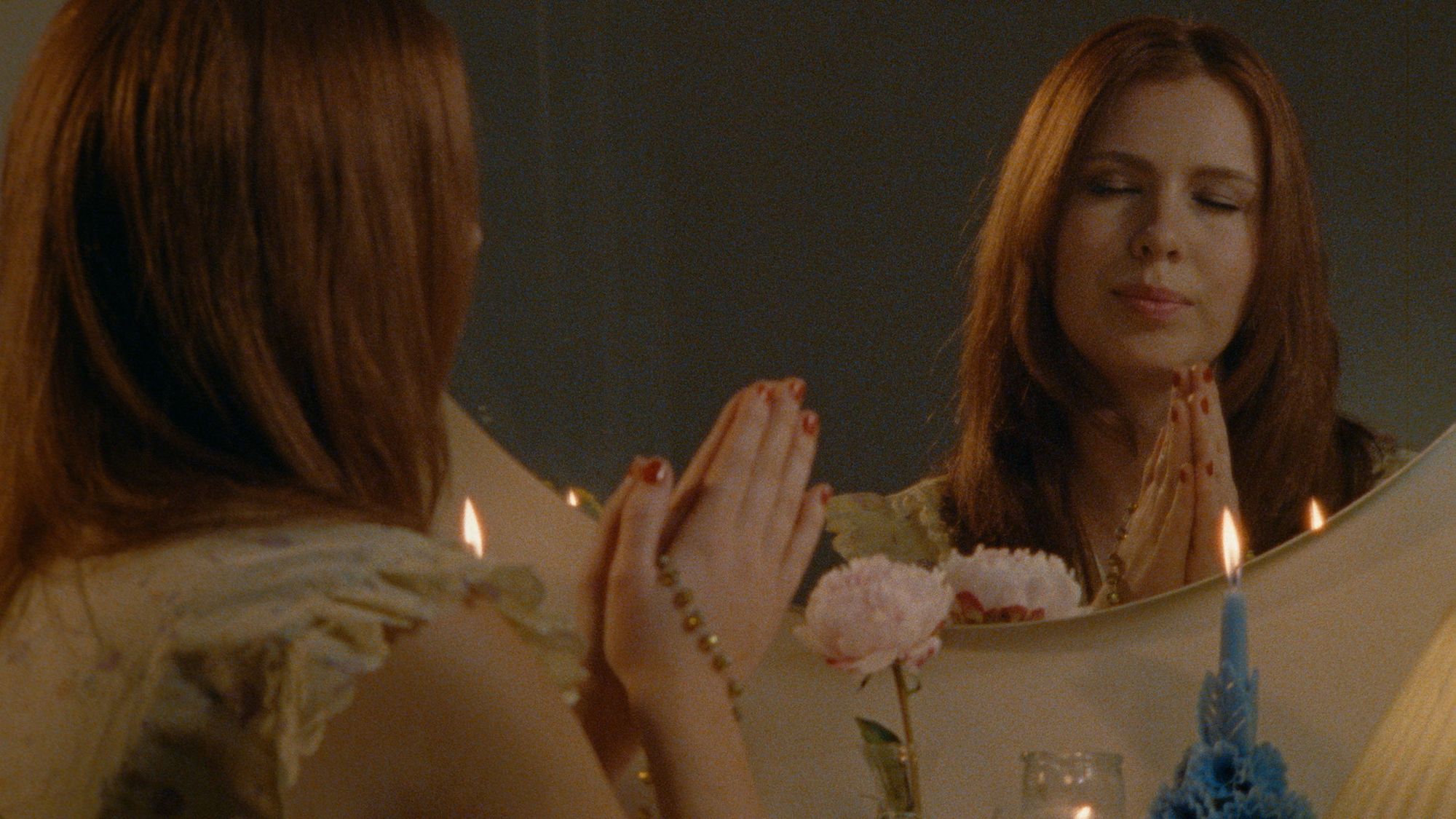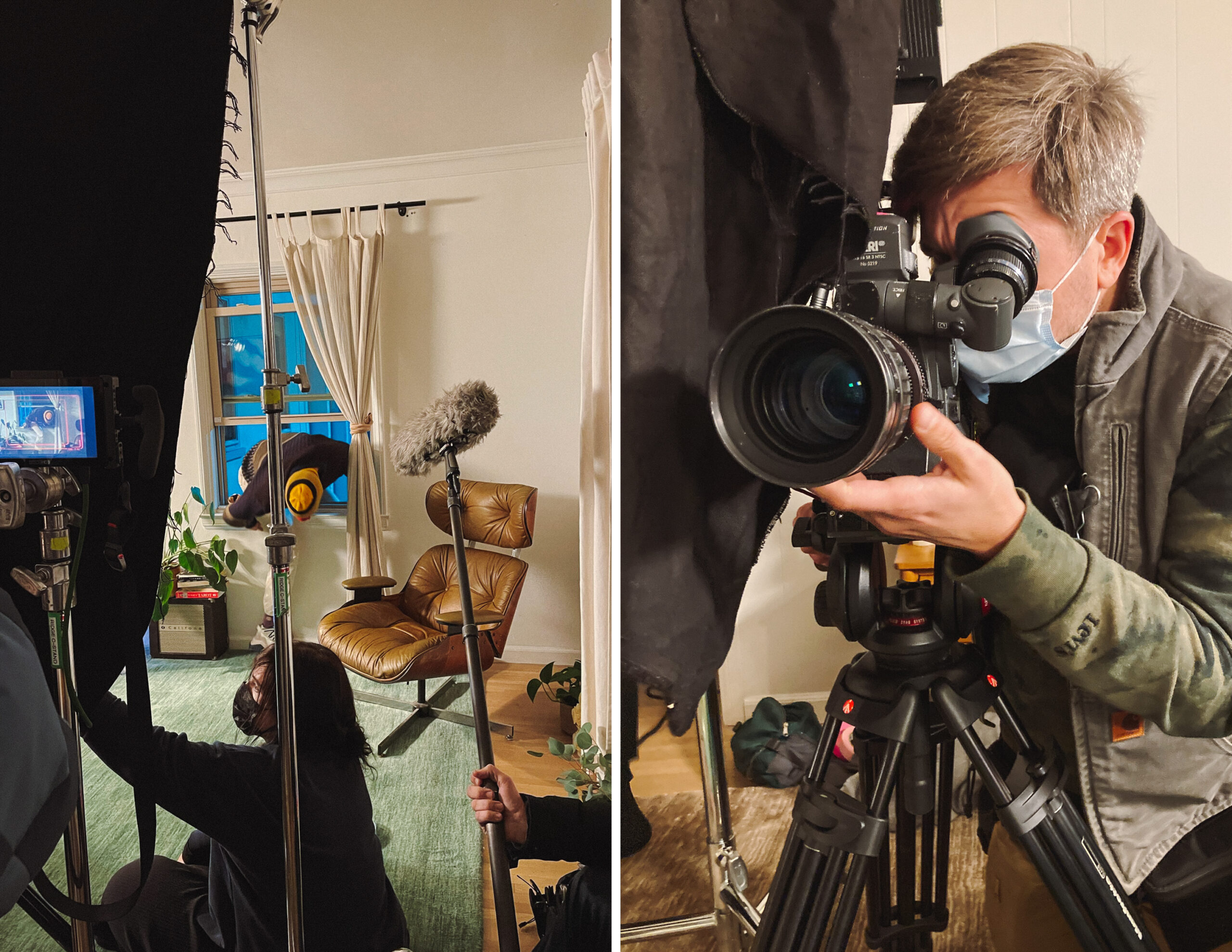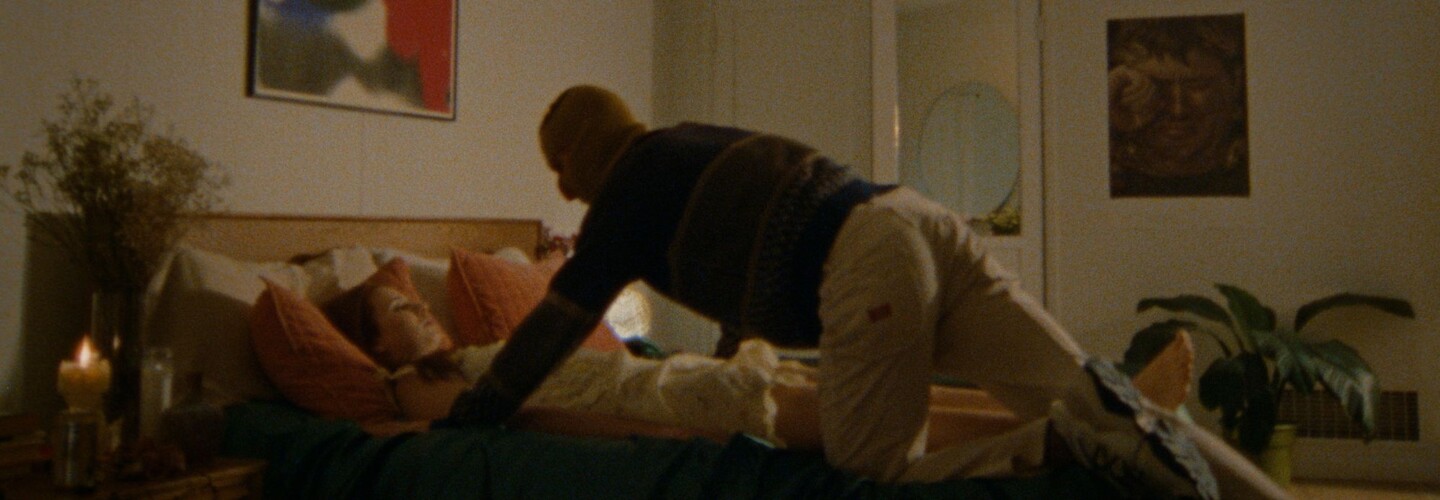
The story collection Bad Thoughts by Nada Alic presents a fantastically bizarre collection of contemporary women whose outlandish intrusive thoughts come to reality. With the book due for release, Alic approached her friend and Sprinkle Lab co-founder Brandon Tauszik to utilise his skills as a director to craft a trio of book trailers titled Daddy’s Girl, A Free Woman and The Intruder. These three films, shot entirely on 16mm with a motley cast pulled together from comedians, musicians and actors are hilarious, toe-curlingly cringe-worthy and capture the essence of the women written by Alic. The LA-based Tauszik, whose background lies predominantly in documentary and branded project work, brings the author’s contemplative internal observations to life with relatable and entertaining characters. Joining us on DN we spoke to Tauszik about drawing from Seinfeld for the films’ physical comedy, the challenges he found translating someone else’s material to the screen and working to a strict one reel of 16mm per film limit.
What drew you to create this trio of films?
I was drawn into the project by my good friend and writer Nada Alic who was preparing to release her debut book Bad Thoughts with Penguin Random House and wanted to create a book trailer to tease it. After some discussion, we decided to create three short films based on parts of some of the short stories in the book. She contributed some money out of pocket, and so did my production company Sprinkle Lab and the whole thing was done on a shoestring.
It was exciting to think about how to translate her imaginary characters into real life, the tween-yet-adult tennis player or the cowardly intruder.
I mostly work on documentary and branded projects. If you consider these short films to be in the realm of ‘narrative’ then this is the first time I’ve directed anything similar. I use quotation marks because there is very little dialogue in any of them, more so gestures, moods, and nonverbal communication. It’s a vibe!
How did you decide on which stories to focus on and what was the process of turning them into scripts?
We decided to create three micro-shorts pulled from parts of three different stories in the book. Nada worked on those selections and we ended up with three that would play back around two minutes long. Nada’s book is beautifully contemplative, and full of internal observations (and bad thoughts!). There was very little dialogue in the selections, so in lieu of a script, the portions were translated straight into three shot lists.
There is an alluring dark comedy to the films, how did you translate that from the original stories?
It was exciting to think about how to translate her imaginary characters into real life, the tween-yet-adult tennis player or the cowardly intruder. Overall I just wanted to keep things simple. I’ve recently been watching Seinfeld for the first time ever and it’s actually a great observation on physical comedy and what you can do instead of dialogue. Elaine’s facial expressions and Kramer’s door entrances are a part of every episode. Having never directed comedy before, I just tried to imagine how to lean into the physicality of each scene as much as possible. I shot a whole animatic of The Intruder on my phone to work out how to move the man in through the window and on top of the woman.
The characters are so fabulously off the wall, how did you pull together the talent to embody them?
We didn’t have the resources to properly cast more than a couple of roles, the older dad and the teenagers. So we just got a bunch of artists, comedians and musicians who don’t act to come and try their best. They’re all friends or friends of friends.
Having never directed comedy before, I just tried to imagine how to lean into the physicality of each scene as much as possible
Our original female lead for The Intruder tested positive for Covid when she showed up to the shoot. Nada frantically called all her friends until Grace Mitchell, a hair and makeup artist, came over immediately and we filmed it with her instead. She had zero preparation!
How involved was Nada in the production side of things?
Nada was very involved and I loved that. I had never directed someone else’s material, other than a commercial that an agency wrote, so I didn’t want to lose her vision in the process. Initially, she was just hoping I could shoot these on my own with no crew and that we’d just “figure it out”. I had to gently convince her that filmmaking is a collaborative and expensive craft. She had set aside some money for this project, and Sprinkle Lab – the production company I run with EP Matty Lynn Barnes – was able to pitch in triple that amount to round things out. We were still working with a very modest budget though.

With such a tight budget, can you talk us through the location scouting and the actual production and shooting of the films?
We brought on our friend Kenny Laubbacher to line produce the project. He did an amazing job of taking my unrealistic dreams and turning them into realistic dreams. My friend and Cinematographer Peter “Mack” McCollough shot it and roped in some film school students to gaff and pull focus. We borrowed lights and Nada did all the wardrobe shopping. The tennis court and sauna locations needed to be rented but the bedroom is Nada’s actual bedroom. We shot everything in two days.
The setting for A Free Woman was originally a public pool’s shower, but the location fell through the day before the shoot. We scrambled and found a defunct sauna and locker room which required the whole thing to be rewritten as all the original cues were to take place as the sisters showered. The sauna didn’t work so we used a borrowed fog machine and sprayed the tile walls with a Windex bottle.

Given the budget constraints why did you opt to shoot on 16mm over digital?
When I first reached out to Peter about shooting it I told him the budget and assumed we didn’t have the resources to shoot on film. But he had some unused Kodak reels lying around and said he would cover the cost of developing and digitizing. What a saint.
We had to keep it to one reel per film though, which is basically a four-to-one shooting ratio. That meant that on set I had to have each shot fully blocked and rehearsed before rolling on it. I only got one or two takes per shot. Having only ever worked with digital previously, that was extremely nerve-wracking for me. It was a great learning experience but I wouldn’t shoot on film again unless the project had ample budget to support the process properly.





There is some brilliant music matching each of the films, how did you arrive at there?
I did all the editing and I have a deep love of music. Dialogue can often drive the pacing of a narrative edit, but since these films don’t have much I wanted to lean on music instead. I spent a long time searching for music that worked for each film but that also worked in tandem with the other films too. Two of them have licensed music and one was scored by Nada’s partner Ryan Hahn.
What are you working on next?
I recently released Facing Life, a multimedia documentary project funded by the Pulitzer Center. I’m always making new photographs or branded work at Sprinkle Lab and have two long term documentary film projects in the mix.


